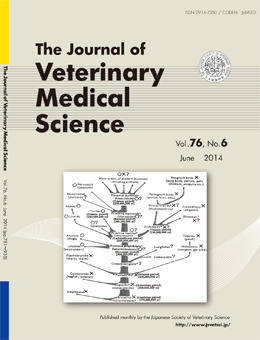Vol.76, No.6 June 2014

Explanation of the cover photograph
Phylogenic Studies on the Olfactory System in Vertebrates
Kazuyuki TANIGUCHI and Kazumi TANIGUCHI (pp. 781-788)
Phylogenetic tree of the vertebrates showing the presence (O) or absence (X) of the vomeronasal organ.
Schematic drawings showing the appearance of the vomeronasal organ (VNO) in the phylogenetic development. Modified after Sarnat and Netsky (1974) [Ref. 32]. Asterisks (*) indicate extinct taxa. The vomeronasal organ first appeared in primitive amphibians around 400,000,000 years ago, which were succeeded by primitive reptiles about 280,000,000 years ago, and then by primitive mammals, 200,000,000 years ago. Present amphibians, both anurans and urodeles, possess the VNO. Present reptiles, such as snakes, lizards and turtles, keep the VNO, but basal reptiles, such as archosaurs and primitive birds, which were already extinct, probably did not have the VNO. Offspring of primitive mammals, such as marsupials, as well as many of modern mammals have the VNO.
This number is available on J-STAGE
http://www.jstage.jst.go.jp/browse/jvms/76/6/_contents